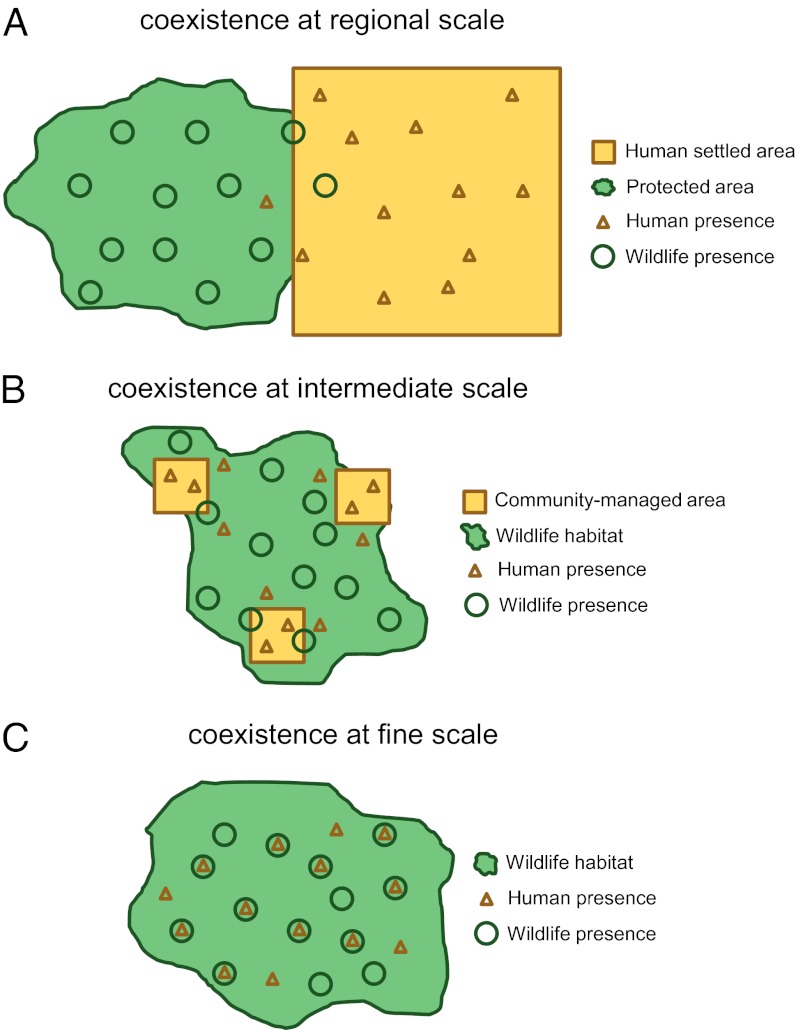Fig. 1.
Schematic diagram of human–wildlife coexistence at different scales. Protected areas aim to facilitate coexistence between wildlife and humans at regional scales (A) by spatially segregating them into distinct zones. Community-managed areas, in which people can extract natural resources on a limited basis, such as pro-wildlife cattle ranches and community forests, encourage coexistence at comparatively smaller intermediate scales (B). Most conservation models, however, are based on the belief that some wildlife species, like large carnivores, cannot coexist with humans at fine spatial scales (C) because of a fundamental conflict over limited resources (e.g., food). We empirically test this prevailing belief using data from camera traps to quantify the capacity and mechanisms of tigers, a notoriously elusive carnivore, to coexist with humans at a fine spatial scale (i.e., exact same point locations) in Chitwan, Nepal.

